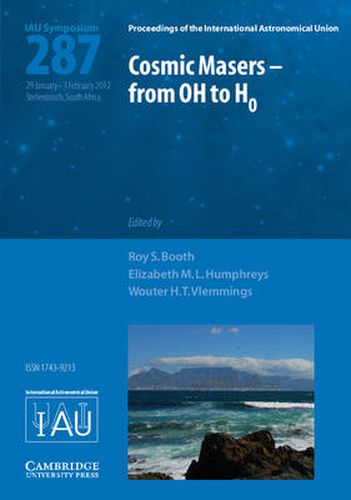Readings Newsletter
Become a Readings Member to make your shopping experience even easier.
Sign in or sign up for free!
You’re not far away from qualifying for FREE standard shipping within Australia
You’ve qualified for FREE standard shipping within Australia
The cart is loading…






Cosmic masers, naturally occurring amplifiers of microwave emission from atoms and molecules in the Milky Way and other galaxies, provide important tools to investigate astrophysical environments. The first, hydroxyl (OH) masers were discovered in 1965 and since that time several thousand sources of maser emission, from a variety of cosmic molecules, have been discovered and studied. Because this natural emission occurs at discrete frequencies, which depend upon specific atomic or molecular transitions, masers are also useful for studying the structure and dynamics of our own galaxy. Masers in other galaxies are now used for cosmological studies of the dynamics of massive black holes in galactic nuclei and to directly measure the Hubble constant, H0. This volume contains a comprehensive, up-to-date review of cosmic masers, their nature, sources, environments and uses, as presented at IAU Symposium 287, the fourth international symposium on cosmic masers.
$9.00 standard shipping within Australia
FREE standard shipping within Australia for orders over $100.00
Express & International shipping calculated at checkout
Cosmic masers, naturally occurring amplifiers of microwave emission from atoms and molecules in the Milky Way and other galaxies, provide important tools to investigate astrophysical environments. The first, hydroxyl (OH) masers were discovered in 1965 and since that time several thousand sources of maser emission, from a variety of cosmic molecules, have been discovered and studied. Because this natural emission occurs at discrete frequencies, which depend upon specific atomic or molecular transitions, masers are also useful for studying the structure and dynamics of our own galaxy. Masers in other galaxies are now used for cosmological studies of the dynamics of massive black holes in galactic nuclei and to directly measure the Hubble constant, H0. This volume contains a comprehensive, up-to-date review of cosmic masers, their nature, sources, environments and uses, as presented at IAU Symposium 287, the fourth international symposium on cosmic masers.